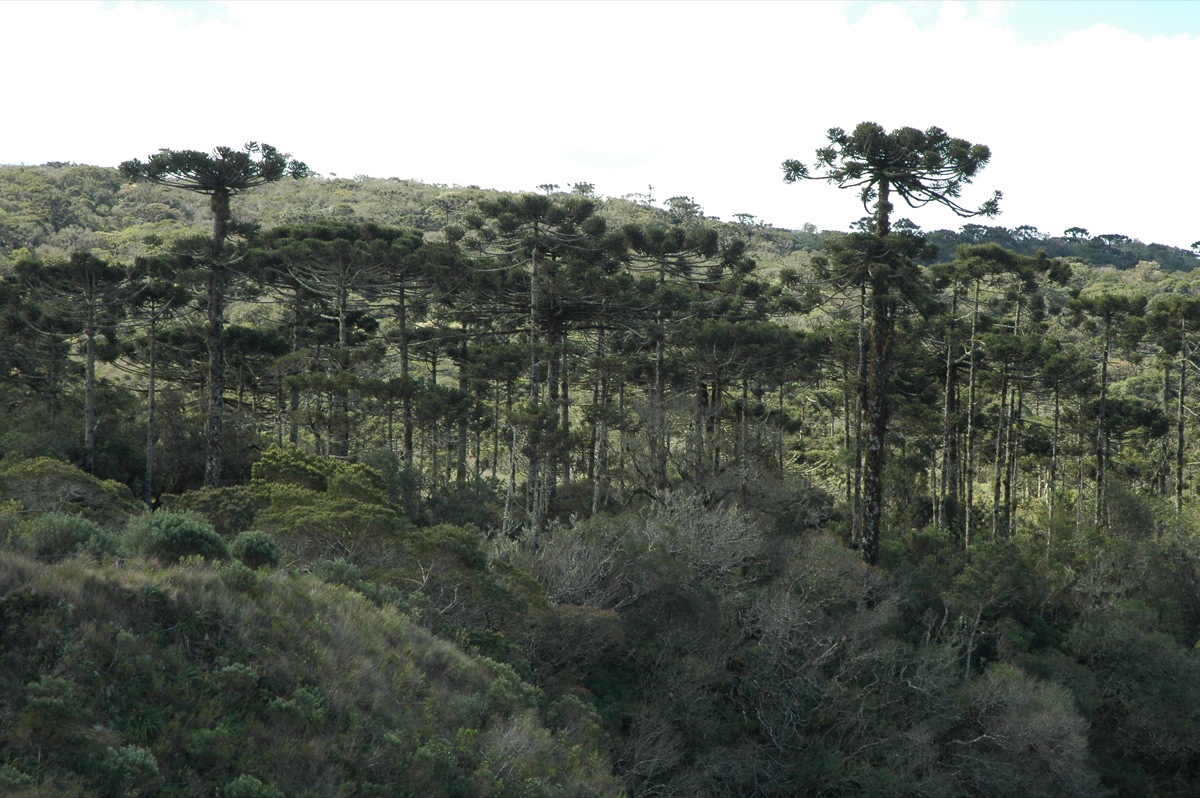Southern Brown Howler on:
[Wikipedia]
[Google]
[Amazon]
The southern brown howler (''Alouatta guariba clamitans'') is a monkey subspecies of brown howler native to southeastern Brazil ( Minas Gerais to
 The southern brown howler is found in the Atlantic forests of eastern Brazil where it occurs in the states of Espírito Santo, Rio de Janeiro, Minas Gerais, São Paulo, Paraná, Santa Catarina and
The southern brown howler is found in the Atlantic forests of eastern Brazil where it occurs in the states of Espírito Santo, Rio de Janeiro, Minas Gerais, São Paulo, Paraná, Santa Catarina and
Rio Grande do Sul
Rio Grande do Sul (, , ; "Great River of the South") is a Federative units of Brazil, state in the South Region, Brazil, southern region of Brazil. It is the Federative_units_of_Brazil#List, fifth-most-populous state and the List of Brazilian st ...
) and far northeastern Argentina ( Misiones). Gregorin, 2006, considered the southern brown howler to be a separate species, ''Alouatta clamitans'', but this has not been universally accepted.
Distribution and habitat
 The southern brown howler is found in the Atlantic forests of eastern Brazil where it occurs in the states of Espírito Santo, Rio de Janeiro, Minas Gerais, São Paulo, Paraná, Santa Catarina and
The southern brown howler is found in the Atlantic forests of eastern Brazil where it occurs in the states of Espírito Santo, Rio de Janeiro, Minas Gerais, São Paulo, Paraná, Santa Catarina and Rio Grande do Sul
Rio Grande do Sul (, , ; "Great River of the South") is a Federative units of Brazil, state in the South Region, Brazil, southern region of Brazil. It is the Federative_units_of_Brazil#List, fifth-most-populous state and the List of Brazilian st ...
. Its range extends southwards as far as the Camaquã River
The Camaquã River () is a river of Rio Grande do Sul state in southern Brazil.
The delta of the river, where it empties into the Lagoa dos Patos, is protected by the Camaquã State Park, created in 1975.
See also
*List of rivers of Rio Grande ...
and eastward to Misiones Province in Argentina. Its northern extent is unclear, but may be the Doce River
The Doce River (literally the "sweet river"; pt, Rio Doce ) is a river in southeast Brazil with a length of .
The river basin is economically important. In 2015 the collapse of a dam released highly contaminated water from mining into the river ...
or the Jequitinhonha River. Habitats include lowland, sub-montane and montane forests, and it is tolerant of disturbed habitats and human encroachment.
Ecology
Howlers move around in small troops, consisting of a dominant male, several females and a number of juveniles. The monkeys are so called because of the loud calls made by males, more roar than howl, which can be heard a mile (1.5 km) or more away, mostly at dawn and dusk. The throats of males have enlarged vocal sacs and large tracheal cartilages which act as resonators to amplify the sounds. The diet of these monkeys consists mostly of leaves, supplemented by flowers and fruit, and these foods being plentiful in the rainforest, the territories defended by the troops are small. Rival troops howl at each other but territorial disputes are mostly settled vocally, without the monkeys needing to meet face to face. In the Araucaria pine forests of southern Brazil, the chief predators of these monkeys areocelot
The ocelot (''Leopardus pardalis'') is a medium-sized spotted wild cat that reaches at the shoulders and weighs between on average. It was first described by Carl Linnaeus in 1758. Two subspecies are recognized. It is native to the southwes ...
s (''Leopardus pardalis''), cougar
The cougar (''Puma concolor'') is a large Felidae, cat native to the Americas. Its Species distribution, range spans from the Canadian Yukon to the southern Andes in South America and is the most widespread of any large wild terrestrial mamm ...
s (''Puma concolor''), and jaguar
The jaguar (''Panthera onca'') is a large cat species and the only living member of the genus '' Panthera'' native to the Americas. With a body length of up to and a weight of up to , it is the largest cat species in the Americas and the th ...
s (''Panthera onca''), as well as the larger birds of prey.
Status
The International Union for Conservation of Nature has assessed this monkey's conservation status as beingvulnerable
Vulnerable may refer to:
General
* Vulnerability
* Vulnerability (computing)
* Vulnerable adult
* Vulnerable species
Music
Albums
* ''Vulnerable'' (Marvin Gaye album), 1997
* ''Vulnerable'' (Tricky album), 2003
* ''Vulnerable'' (The Used album) ...
. This is partly because of the monkey's susceptibility to yellow fever; during the period 2007 to 2009, an outbreak of yellow fever killed large numbers of howlers in the Misiones Province in Argentina, and the State of Rio Grande do Sul
Rio Grande do Sul (, , ; "Great River of the South") is a Federative units of Brazil, state in the South Region, Brazil, southern region of Brazil. It is the Federative_units_of_Brazil#List, fifth-most-populous state and the List of Brazilian st ...
in Brazil. The animal has a wide range and is present in a number of protected areas, but the rainforest in which it lives is being cleared for cattle ranching and agriculture, resulting in fragmentation of the forest. The subpopulations in these fragments are likely to suffer from inbreeding. They are also impacted by urbanisation and are hunted for food.
References
{{Taxonbar, from=Q2583127 Howler monkeys Mammals of Argentina Mammals of Brazil Fauna of the Atlantic Forest Environment of Minas Gerais Environment of Paraná (state) Environment of Rio Grande do Sul Environment of Santa Catarina (state) Environment of São Paulo (state) Misiones Province Taxa named by Ángel Cabrera Mammals described in 1940